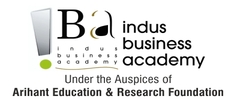
Macaulayism and Lessons in Marketing from the British Raj
The virtue and risk of segmentation
We have heard of the saying, “Divide and Rule.” In Marketing, we call it segmentation, wherein we break up our target market by Demographics (who we are), Attitudes (What we think and believe) and Behaviour (What we do).
Segmentation is risky and expensive. We need to ensure that we have created the right target segments, and we need to ensure that we are hitting each segment with the right marketing message.
A marketing message has two parts.
- Identification of an existing need or creation of a need leading to a dissatisfaction with the current state
- That this need can be satisfied by purchasing our product.
When the British segmented India, they fomented competition between various rulers. They catered to a need of one-up-man-ship, playing on the self esteem of the rulers and and their need to feel superior to others. The recognition and reward system (Raya-bahadurs etc., supply of guns, cannons, soldiers, training, preferred customer status) was used to foment dissatisfaction.
After 1857, the princely states were downplayed and there was a need for another segmentation strategy. This was done by using the caste system, the religions and by the promotion of a new ruling class like the Zamindars.
Look at the trend. The cost of creating and maintaining the earlier segmentation of 500 odd princely states was exorbitant and therefore control was inadequate. Each state had different problems and therefore different needs. The French, the Dutch and the Portuguese, therefore, were able to maintain a stronghold in certain parts of India. The 1857 revolt happened because of this lack of control.
After 1857, the segmentation method was pan-India. Demographics using religion, caste and class was more cost effective, as the needs were more homogenised, and the cost of creating the right marketing message was easier. Penetration into these segments by outsiders was difficult as these segments were not open to outside influences. The religious leaders determined the actions of their flock. A Brahmin did not listen to any one but a more superior Brahmin. Although the cost of maintaining a segment was low, the effectiveness of the segment was also low.
The cost of creating a new segment like “class” was high. The British originally created a ruling class and a ruled class. The focus was on the ruling class, and it was hoped that the ruling class could determine the behaviour and buying pattern of the ruled class. This did not happen.
Homogenisation of a market (de-segmentation)
The management dilemma is evident. Segmentation allows for better penetration, but the cost of segmentation is higher.
This is where Thomas Babington Macaulay came up with a masterpiece of marketing strategy of creating a large segment that:
- Could be controlled in terms of behaviour
- Has a common communication strategy so that the marketing message is not lost in translation
- Is large enough to impact revenues and profits.
His strategy is called Macaulayism. Wikipedia says, “The English form of educational instruction was directly imported to India under Macaulay’s watchful eye and the English language was established as the main vehicle of instruction. It was hoped to establish a new cultural elitein the colony and that the ideas of this new English-speaking and British-educated group would refine the vernacular dialects of the country, enrich those dialects with terms of science borrowed from the Western nomenclature and render them fit vehicles for conveying knowledge to the great mass of the population.”
Look at the underlined phrases and you will realise that all the 3 needs mentioned above are fulfilled.
- By creating the English speaking middle class, the British created a market for products of Industrial Britain.
- The British created a society mirroring its own social norms and therefore gained acceptability in India. To penetrate religious strongholds, it created reformers from the middle class that over-emphasised the evils of religion and therefore promote a milder and more “enlightened” form of religion and society.
- The common language allowed the British to use their superior command over the English language to control knowledge dissemination and the marketing messages. It allowed other Britishers to communicate directly with the masses.
- By creating a need to strive towards British ideals and norms, a new dissatisfaction was created, which could only be satisfied by British products, British rewards and recognition ((Knighthood, Rayabahadurs, inclusion in the Indian Civil Service).
In one shot, Macaulay created economic and political control by controlling the attitude and behaviour of an influential mass thatcut across most demographics.
[box_with_shadow background_color=’#000000‘ shadow=’yes’]
 Prof. Chandra Kant is a Professor at IBA and has over 25 years experience in Strategic IT implementation for the Banking and Financial Services Sector. He has held the post of Head, Asia Pacific Technology for Credit Suisse, CIO of JM Group, Head of Financial Services in Perrot System India, Vice-President in Merril Lynch and Head of Marketingin Quintegra Solutions. He has been consultant to various companies advising them on Technology and Strategic Alignmwent.
Prof. Chandra Kant is a Professor at IBA and has over 25 years experience in Strategic IT implementation for the Banking and Financial Services Sector. He has held the post of Head, Asia Pacific Technology for Credit Suisse, CIO of JM Group, Head of Financial Services in Perrot System India, Vice-President in Merril Lynch and Head of Marketingin Quintegra Solutions. He has been consultant to various companies advising them on Technology and Strategic Alignmwent.
[/box_with_shadow]
Tag:Macaulayism, marketing, segmentation
